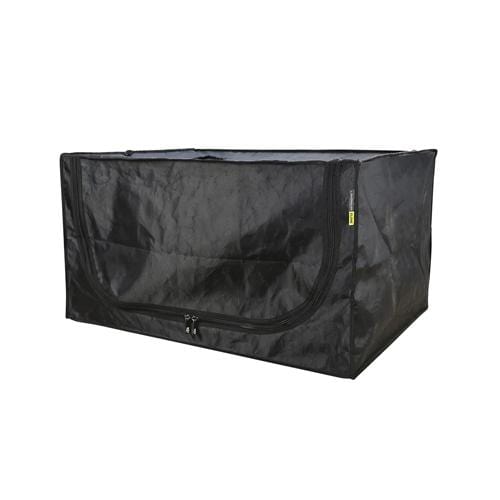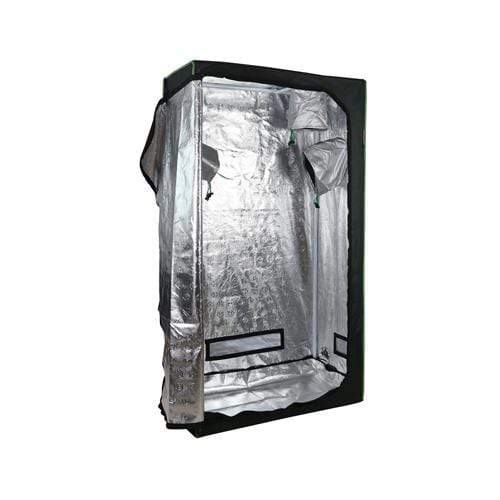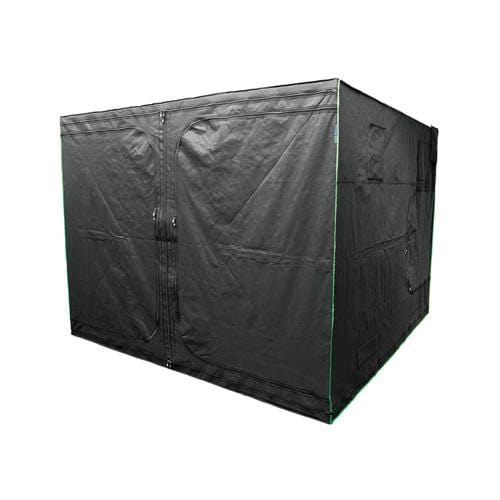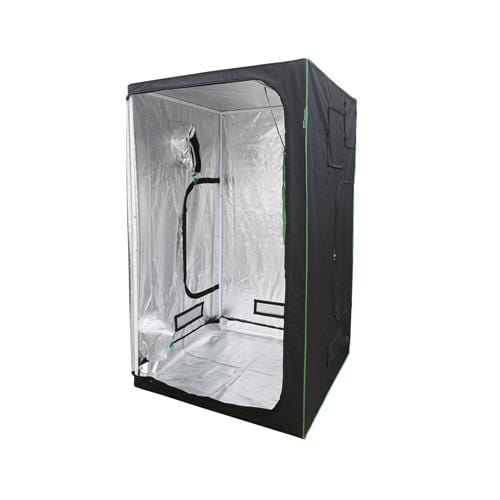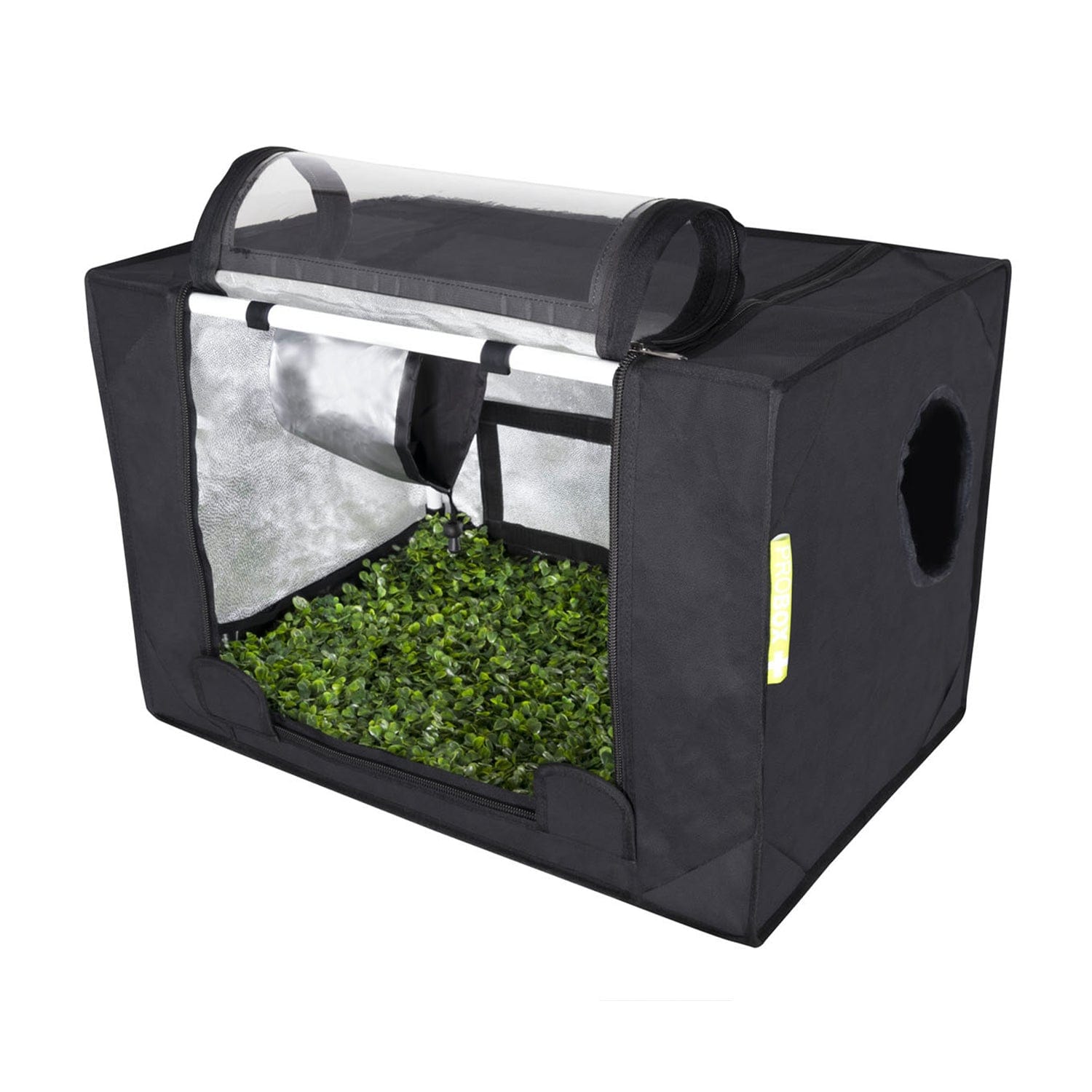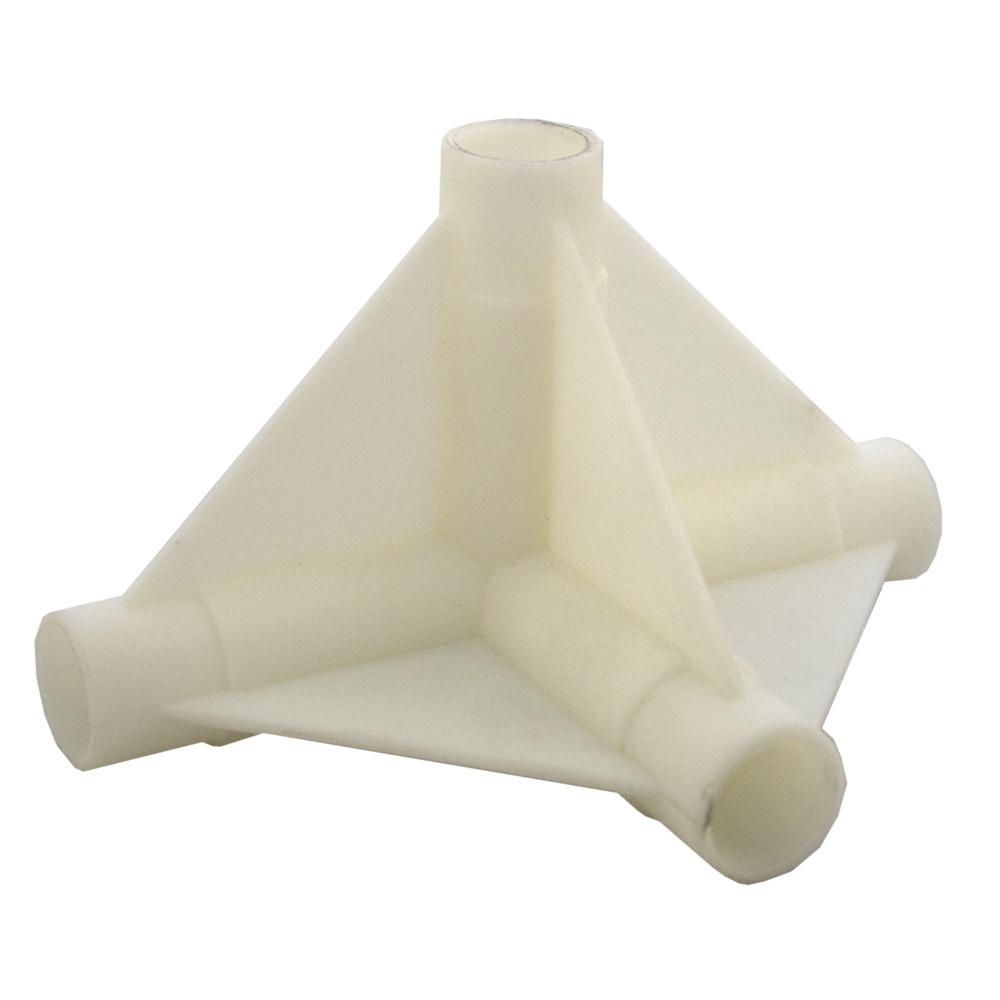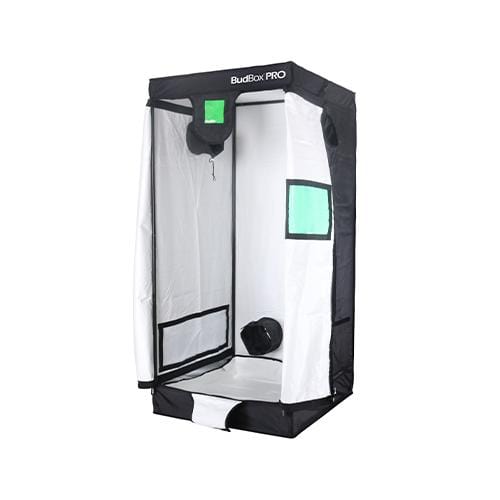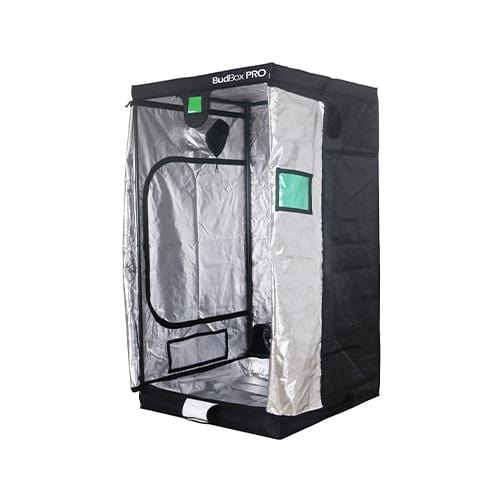Benefits of Grow Tents
Made from durable canvas (usually a mylar material) mounted on a rigid frame, these clever indoor growing tents offer a whole host of benefits. Forming a sealed space, they prevent light from seeping out, reduce odours and even noise. They can also help to prevent pest invasions and make controlling your grow environment so much easier from the get go. Key benefits include:
-
Grow crops throughout the year: The nature of the grow tent means you can grow both native and exotic crops throughout the year. Total control over the growing environment and micro-climate allows you to arm indoor crops such as vegetables, tomatoes, flowers, herbs and more, anytime you like.
-
Range of sizes: Indoor growing tents are available in various shapes and sizes to suit your grow space. Heights usually range from 1.2 – 2.2m. You can also find models with pitched roofs, ideal for making the most out of a loft space. From small propagation tents to extra-large 6x3m models like the BudBox Pro Titan 6, no matter what you are growing, you’ll find the right shape and height to suit your individual needs.
-
Optimised growing environment: Allowing precise control over the grow room environment, it is easier to control key aspects such as temperature, light, humidity and ventilation. Heavy duty canvas and zips stop light from escaping, and some models have a viewing window so you can inspect your crops without disturbing them.
-
Reflectivity: Tents are available with either white or silver linings. The lining helps to reflect light within the space, maximising lighting efficiency and helping your crops thrive.
- Minimise the threat of pests and disease: The sealed environment can help to prevent pests accessing the grow space. Pests can spread disease, so minimising their presence can help to cut the risk of plant diseases that can ultimately destroy your crop. What’s more, you can wipe down the lining of the tent, helping you to maintain a clean growing environment.
- Odour control: Various plant species can emit strong odours at certain stages of the growth cycle. The sealed environment can help to prevent odours leaking out of the grow space. Fitting a carbon filter is a good idea for strong smelling plants. These devices filter the air and neutralise odours before it passes through the extraction system.
What size grow tent do I need?
There are a few things you need to consider before choosing the best size grow tent.
-
Available space: You should always plan ahead when it comes to deciding on the best size tent for your grow room. As a rule of thumb, always measure the available space before buying. Don’t forget to measure height as well as length and width. This will save you from accidentally buying the wrong size.
-
Type of plants: Plants grow to different sizes and heights, have different growth patterns and canopy sizes. Establishing the space requirements of your specific plant type is crucial as your tent will need to be an appropriate size to accommodate full growth without overcrowding to help you achieve higher yields.
-
How many plants you intend to grow: Deciding how many plants you want to grow before starting out is a wise move to avoid overcrowding.
-
Crop management: Your plants will need regular maintenance. You’ll need to factor in enough room so you can access the grow space to inspect, feed, water and prune your crops without disturbing surrounding plants.
-
Splitting the grow space: You might want to split the tent into sections for different plants or growth stages such as the vegetative and flower stages. Reflective tent sheeting is perfect for this.
Don’t forget that different plants and growth stages need different intensities of light. If you intend to divide your grow space then you will need a multi-light/reflector set up. This will ensure lighting optimisation for each compartment and its intended crop.
Other things to consider when splitting the space include plant compatibility, environment control and nutrient management.
-
Lighting system: Different plant species have differing lighting requirements, and the various light types have different intensities, coverage and height requirements. As a result, you should try to match the dimensions of your grow tent to suit the requirements of your desired lighting system.
This will ensure that your grow tent is the right size and height to maximise canopy cover and photosynthesis. If it is too small you could cook your plants – too big and you may find some crops don’t get enough light penetration.
As the plants grow, you will need to adjust the height of the lights to prevent burning and overheating - easily done with ratchet light hangers.
-
Ventilation system: Good ventilation is critical for a successful crop, so make sure you have enough room to space your plants out so they don’t impinge on each other.
You will also need to factor in space for your ventilation system including ducting, fans and filters to ensure your plants can breathe.
Lack of ventilation can lead to a hot growing environment with stagnant air and high humidity levels. These things can have a negative impact on plant health, transpiration, and nutrient uptake. They can also heighten the risk of mould and fungal diseases.
-
Growing method (hydroponics, container gardening, etc): Your growing method will also play a role in determining the best size tent for your needs. For example, hydroponic systems can be more space-saving compared to container gardening.
Do you plan on growing on just one level or are you thinking about creating a vertical garden inside your grow tent? Vertical growing is usually best suited to vining and climbing plants and species that don’t grow to great heights, such as microgreens, herbs, strawberries and leafy greens.
Is a silver or white tent lining better?
Generally speaking, silver mylar tents tend to hold onto more heat because its shiny surface is a highly reflective, insulative material. If you plan on choosing a silver model, you’ll need to bear this in mind as your grow space can get hotter. You may need to consider using a heavy duty ventilation system for better climate management.
White linings are also highly reflective but tend to allow heat to dissipate through the canvas wall, helping to keep the overall internal temperature a good few degrees lower.
Both types are excellent for growing and maximise light reflection throughout the space, ensuring that plants receive an even amount of light from every angle. Silver linings have a reputation for reflecting more PAR light, but concentration of light within the creases of the lining can create hot spots that could stress plants, indicating uneven light reflection.
Deciding whether to choose white or silver is a personal choice. In our opinion both do a great job!
How do I hang grow lights in a tent?
Tents consist of a frame with a canvas carefully pulled over the top. The internal frame allows for light fittings to hang down within the tent. It is essential to invest in a high quality tent with a sturdy frame because some cheap models may not be able to take the weight of your lighting system.
The type of lights and lighting accessories you choose will be dependent on the type of plants that you want to grow. As your plants grow, you will need to be able to adjust the height of the lights, so make sure to invest in rope ratchet hangers which allow you to adjust the height of your indoor grow lights.
How do I ventilate my growing tent?
Optimising ventilation within the growing environment is essential. Poor ventilation can lead to stressed, diseased, unhealthy plants and can have a big impact on the volume and quality of your yield.
Grow tents come complete with purpose built vents so you can easily install your ventilation system without compromising internal lighting conditions.
You will need ducting, an intake fan, extractor fan, oscillating fans, carbon filter and humidity control.
Do I need a propagation tent?
Investing in a propagation tent is a good idea as you can create the optimal environment for seedlings and young plants. Plant propagation requires higher humidity, warmer temperatures and different lighting conditions compared to adult plants. Isolating your seedlings can also make pest management easier, as young plants are more vulnerable to pests and disease.
Many growers, however, are successful in propagating plants within the main tent. To do this, you will need to ensure you can create a dedicated section in the grow space where your seedlings will not get overshadowed. You will also need to optimise the ventilation and lighting to promote their growth. Dividing the tent with reflective tent sheeting can help you do this.
Can I buy a complete grow kit?
Yes, you can! We sell a range of grow kits suitable for beginners and professional growers. These kits include everything you need such as lighting, timers, fans, and filters. With a variety of package options you can also choose enhanced kits that include nutrients, CO2, pH meters and more.
Buy Grow Tents Online
As you can see, there are many things to consider before buying a grow tent. Our friendly team is always here to help. If you have any questions – simply drop us a line or leave a message.
In our opinion, one of the most important factors is to invest in quality. Cheap growing tents may have weak frames and sub-standard canvas and zips, so are likely to break. Luckily, here at London Grow, we only stock quality tents from the best names in the business to ensure complete customer satisfaction. Explore our selection to take your growing to a new level!




















